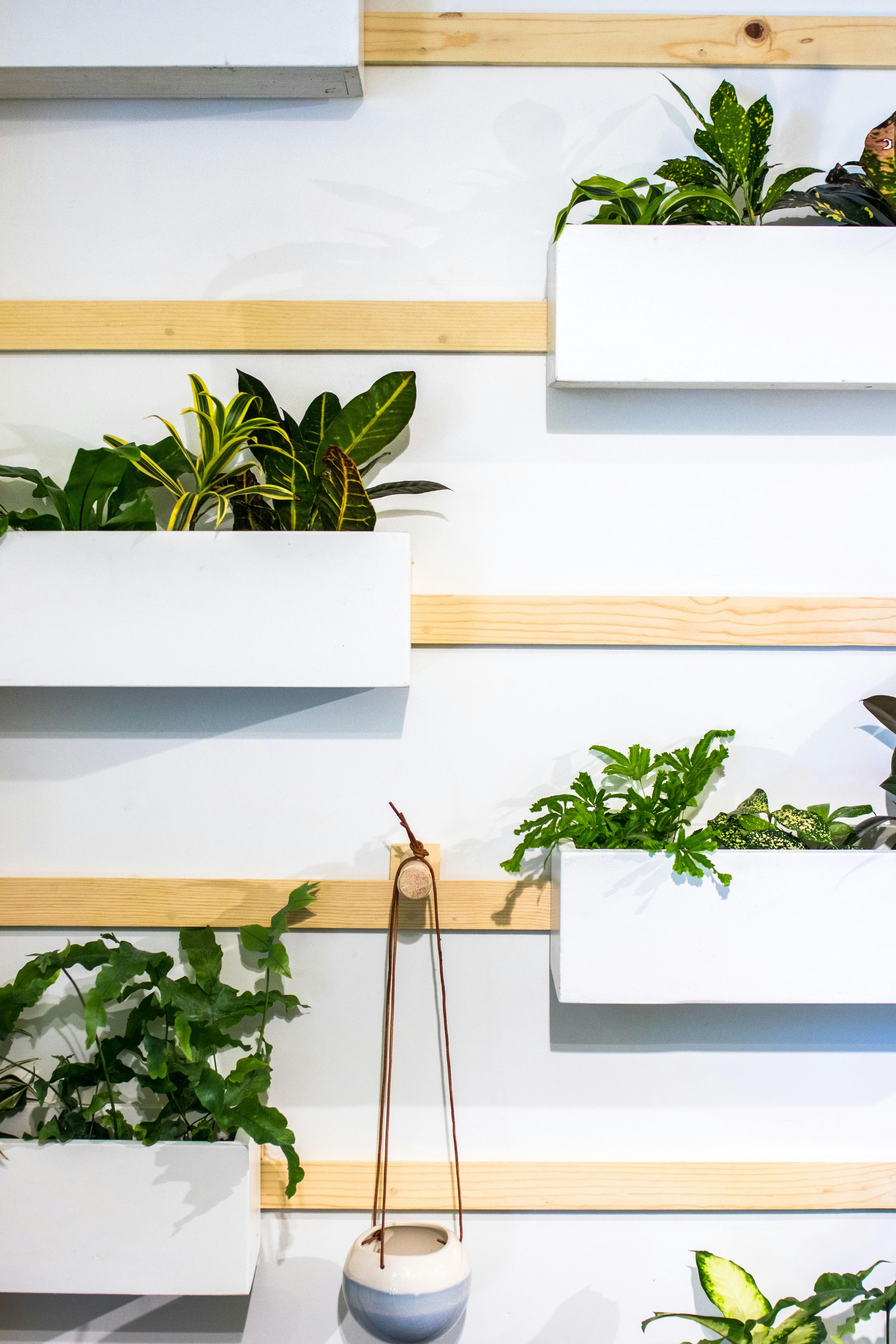Introduction to Office Layouts
In contemporary business environments, office layouts play a pivotal role in influencing employee performance and overall organizational efficiency. The evolution of office spaces reflects broader societal changes and advancements in workplace culture. Traditionally, offices were designed with the concept of strict hierarchy in mind, often characterized by closed cubicles and isolated workspaces. However, as organizational structures have transitioned towards more collaborative and dynamic models, so too have the designs of office layouts evolved.
Modern office spaces are now often characterized by open layouts, communal areas, and flexible workstations, all of which foster communication and collaboration among employees. Such designs not only reflect a company’s culture but also embody values such as teamwork, innovation, and inclusivity. By creating an environment that encourages interaction, businesses can enhance creative problem-solving and collective productivity. The establishment of a conducive work environment through thoughtful office layouts has become increasingly important, particularly in retaining talent in competitive industries.
The focus on productivity is intricately linked to the design of office spaces. Research indicates that aspects such as natural light, ergonomics, and sound control can significantly impact employees’ focus and efficiency. Furthermore, layouts that facilitate easy access to resources and amenities, such as meeting rooms and relaxation areas, contribute positively to employee well-being. With remote and hybrid work models gaining traction, the role of in-office layouts in fostering a sense of community and connection remains vital. As organizations rethink their spatial arrangements, it is imperative to integrate both functionality and aesthetics to optimize employee motivation and performance.
Understanding Different Office Layouts
Office layouts are essential components that can significantly influence employee productivity, collaboration, and overall workplace satisfaction. The three primary types of office layouts—open plan, cubicles, and hybrid models—each possess distinct design characteristics, functionalities, and targeted demographics.
The open plan office layout emphasizes a shared workspace without the barriers of walls, encouraging interaction among employees. This layout is particularly effective in promoting teamwork and communication, making it suitable for creative industries where collaboration is vital. However, the open layout may contribute to noise distractions and a lack of privacy, potentially hampering concentration for roles that require focused work.
In contrast, cubicles provide a degree of separation between employees while still allowing for some level of interaction. Cubicle layouts are designed to offer personal space and minimize distractions, making them suitable for tasks that necessitate individual focus. However, they can lead to feelings of isolation and decreased collaboration, particularly if not designed with community areas or break-out zones in mind.
The hybrid model combines elements from both open plan and cubicle layouts, integrating various workspace designs tailored to different tasks and employee preferences. This approach strives to balance collaboration with personal working environments, catering to diverse job functions and personality types. While hybrid layouts facilitate flexibility, they can be complex to implement effectively, requiring thoughtful design to ensure spaces serve their intended purpose without creating confusion.
Each office layout presents its own set of advantages and disadvantages. Understanding these differences can empower organizations to make informed decisions about their workspace configurations, aligning them with productivity objectives and employee needs. Whether choosing an open plan, cubicles, or a hybrid model, selecting an appropriate office layout is vital for fostering an engaging and effective working environment.
Open Plan Offices: The Pros and Cons
Open plan offices have gained significant popularity in recent years as organizations seek to enhance collaboration and communication among employees. This layout is characterized by large, uninterrupted spaces that typically house multiple workstations, which can facilitate teamwork and the free exchange of ideas. When employees share a workspace, it often leads to improved social interactions and can foster a sense of community. Collaborative tasks may become easier to accomplish, as proximity enables quick discussions and feedback, which can greatly enhance overall productivity.
However, the open plan office design is not without its challenges. One of the primary drawbacks is the potential for increased noise levels and distractions. With many employees working in close proximity, conversations, phone calls, and even the sounds of typing can create an environment that is not conducive to focused work. Research indicates that these distractions can hinder productivity, leading to decreased job satisfaction among employees who prefer quieter work environments. A study published in the journal “Environment and Behavior” found that noise in open offices can significantly lower engagement and motivation levels, negatively impacting employee performance.
Moreover, while open offices are designed to promote collaboration, they may have the opposite effect for some employees. Individuals who require privacy to concentrate on tasks may experience heightened stress and frustration due to constant interruptions. This situation can stifle creativity, as employees may feel uncomfortable sharing their ideas or working on innovative projects in a bustling atmosphere. Companies that adopt an open plan layout must balance the need for collaboration with the importance of providing spaces that allow for focused work. Real-world examples, such as those from tech giants like Google and Facebook, showcase how innovative designs can incorporate quiet zones alongside open areas, aiming to create a more balanced approach to office layouts.
Cubicles: Balancing Privacy and Collaboration
Cubicle-based office layouts have long been a staple in corporate environments, providing a distinct balance between privacy and collaboration. This form of workspace allows employees to work with a degree of autonomy while still being integrated into a larger team dynamic. One of the primary advantages of cubicles is the possibility they offer for focused work. Employees are afforded personal space, which can minimize distractions and enhance concentration—a vital factor for maintaining productivity in demanding work environments.
However, the design of these cubicles plays a significant role in their effectiveness. Traditional cubicles may inadvertently create a sense of isolation among employees, potentially affecting their mental health and overall engagement levels. By adjusting the height of cubicle partitions or incorporating transparent materials, organizations can foster an environment that encourages collaboration without sacrificing the privacy that many workers desire. Research has shown that well-designed cubicles can lead to improved morale and greater job satisfaction, ultimately leading to enhanced employee performance.
Moreover, integrating various work zones within a cubicle layout can facilitate collaboration without compromising privacy. For example, incorporating shared spaces for brainstorming sessions or informal meetings can promote teamwork while leaving individual spaces intact for focused work. The flexibility to adapt these cubicles to the changing needs of a team is crucial for maximizing their efficacy. When cubicles are designed thoughtfully, they not only support the need for concentration but also nurture a collaborative culture that enhances teamwork and innovation.
In conclusion, when balancing privacy and collaboration in cubicle environments, it is essential to focus on thoughtful design elements. By adapting cubicles to better suit the needs of employees, organizations can promote an atmosphere conducive to both individual productivity and collaborative efforts, thus driving overall performance.
Hybrid Models: The Best of Both Worlds?
As organizations strive to enhance productivity and employee satisfaction, hybrid office layouts have emerged as a prominent trend. These designs fuse the characteristics of open spaces with the privacy offered by cubicles, creating an adaptable environment that accommodates various work styles and functions. The flexibility inherent in hybrid models allows employees to choose their ideal workspace, whether they require collaboration zones for team projects or quiet areas for focused tasks.
One of the most compelling advantages of hybrid office layouts is their ability to cater to diverse job roles. For instance, team-centric roles that require constant collaboration benefit from open spaces that facilitate communication and idea generation. Conversely, tasks needing concentration can be performed in more enclosed settings. This adaptability not only supports varied work functions but also promotes a healthier work-life balance, as workers can transition between collaborative and solitary environments throughout their day.
Several organizations have successfully implemented hybrid office layouts, demonstrating their positive impact on employee performance. A noteworthy case is that of a technology firm that restructured its workspace to include both dynamic open areas and focused workstations. After the redesign, employee surveys reported higher levels of satisfaction, noting that the ability to switch between different work settings helped enhance their productivity. Furthermore, productivity metrics indicated a measurable increase in project turnaround times, attributed partly to improved employee morale and engagement.
The evidence suggests that hybrid office layouts not only meet the multifaceted needs of the workforce but also foster an environment conducive to collaboration and individual productivity alike. By blending open and private spaces, organizations can create a versatile and innovative workplace that supports the diverse roles within their teams, ultimately leading to enhanced productivity and heightened employee satisfaction.
Influence on Employee Well-Being
The design of office layouts plays a crucial role in influencing employee well-being, encompassing various dimensions such as mental health, ergonomics, and overall job satisfaction. One of the primary factors to consider is how a well-thought-out office layout can promote a healthier mental state among employees. Open office designs may foster collaboration and communication; however, they can also lead to distractions and stress. In contrast, layouts that include quiet zones or private spaces can help enhance focus and provide employees with opportunities to recharge. This balance is essential for maintaining mental health and productivity.
Furthermore, ergonomics significantly contributes to employee well-being in the workspace. By integrating ergonomic furniture and workstation designs, companies can minimize the risk of physical strain and injuries, which are prevalent in poorly designed environments. Adjustable desks, comfortable seating, and well-placed monitors are components of an ergonomic office layout that can lead to improved posture and reduced discomfort. Employees appreciate a workspace that considers their physical health, promoting higher morale and productivity.
Natural light and access to green spaces also weigh heavily on employee satisfaction and overall productivity. Research has shown that exposure to natural sunlight can enhance mood and energy levels, contributing to a positive work atmosphere. Office layouts that maximize the influx of natural light while incorporating elements of biophilic design, such as indoor plants or views of nature, can significantly enhance well-being. Moreover, these features create an inviting environment, encouraging employees to spend more time at work without experiencing burnout.
Ultimately, the interplay between office layouts and employee well-being is vital in supporting work-life balance, fostering positive workplace relationships, and enhancing job satisfaction. By considering these factors in the design process, organizations can create environments that promote the health and productivity of their employees, leading to long-term benefits for both individual and organizational performance.
Cultural and Organizational Fit
The office layout plays a pivotal role in shaping the culture and operational efficacy of an organization. Different industries have distinct requirements stemming from their unique needs, values, and workflows. Consequently, effective office designs must align closely with a company’s organizational culture to enhance employee performance and engagement. For example, a tech startup that prioritizes innovation and collaboration may benefit from an open office layout that fosters communication and teamwork. This type of arrangement encourages creativity and the free exchange of ideas, thereby reinforcing the company’s mission and vision.
In contrast, industries that handle sensitive information, such as legal or financial services, may require more private office spaces to ensure confidentiality and a focused work environment. Here, individual offices or cubicles provide the necessary privacy and reduce distractions. Such a layout not only aligns with the organization’s operational workflows but also accommodates the core values of trust and security inherent in these fields. By designing workspaces that reflect these values, organizations can cultivate a sense of belonging among employees, which is vital for motivation and productivity.
Furthermore, the alignment between office layout and culture extends beyond physical arrangements. Elements such as color schemes, furniture choices, and communal spaces can promote inclusivity and a sense of community. For instance, wellness-centric organizations might emphasize natural lighting and biophilic design to promote mental health and well-being, directly reflecting their organizational ethos. Ultimately, a well-suited office design underpins an organization’s objectives, shaping not just how employees interact with each other but also how they perceive their roles within the company. Creating a culturally cohesive workspace can lead to increased motivation and higher performance, illustrating the critical link between office layout and organizational success.
Future Trends in Office Layout Design
The landscape of office layout design is evolving at an unprecedented pace, driven by several key trends that reflect changes in workforce dynamics and technological advancements. One of the most significant influences on office design in recent years has been the rise of remote work. Many organizations have embraced hybrid working models, allowing employees to alternate between working from home and the office. This shift necessitates reimagining office layouts to accommodate employees who may only be present part-time. Consequently, offices are increasingly adopting flexible workspaces that promote collaboration while providing individuals with the choice to work in a manner best suited to their needs.
In addition to remote work dynamics, technology integration plays a crucial role in shaping modern office environments. The adoption of smart office technologies, such as IoT devices, cloud-based communication tools, and advanced collaboration software, enables seamless connectivity among team members, whether they are physically present or working remotely. Future office layouts will likely incorporate designated areas for hybrid meetings, where technology facilitates real-time communication, bridging the gap between in-office and remote employees. Furthermore, the rise of virtual and augmented reality could also influence the design of training and collaborative spaces, fostering a more engaging and interactive working environment.
Sustainable design principles are another vital trend affecting office layout. As businesses recognize the importance of environmental responsibility, there is a greater emphasis on creating workplaces that minimize their ecological footprint. Future office designs are expected to prioritize natural light, energy-efficient materials, and biophilic design elements. Such practices not only enhance the aesthetic appeal of the workspace but also contribute positively to employee well-being and productivity. By prioritizing sustainability, organizations can create an attractive workplace that resonates with employees’ values, ultimately fostering a more motivated and engaged workforce.
Conclusion: Finding the Right Balance
In the quest to enhance employee performance, the significance of an appropriate office layout cannot be overstated. An effective layout not only promotes productivity but also contributes to employee satisfaction and overall well-being. The selection of the right office design is pivotal as it helps to create a conducive work environment that aligns with the diverse needs of employees. Each organization is unique, and understanding the specific requirements of the workforce is essential to determining the most suitable layout.
Leaders should adopt a tailored approach, carefully considering factors such as the nature of the work, collaboration requirements, and employee preferences. For instance, open layouts may foster communication and teamwork, while quiet zones are vital for focused tasks. This balance is critical; the right design can bolster engagement and motivation among team members, leading to enhanced productivity. Moreover, it is important to recognize that employees’ needs may evolve over time, necessitating periodic reassessment of the office configuration.
Continuous evaluation of office designs is crucial for ensuring they remain effective. Engaging employees in feedback sessions about their workspace experiences can yield valuable insights. This process not only affirms the importance of employee voices in shaping their work environment but also allows organizations to make informed adjustments to their office layouts. Ultimately, finding the right balance in office design will not only maximize productivity but also create a culture of satisfaction that fosters long-term success. The journey towards an optimal office layout is ongoing; therefore, a commitment to adaptability and responsiveness to change remains essential for organizations aiming to thrive in today’s competitive landscape.







